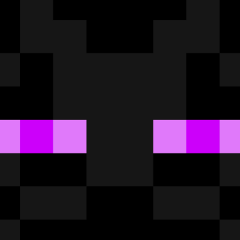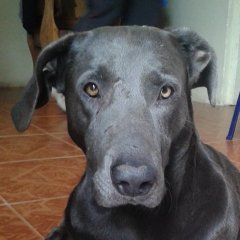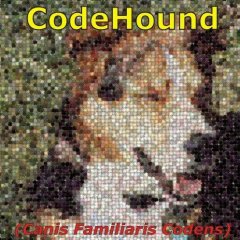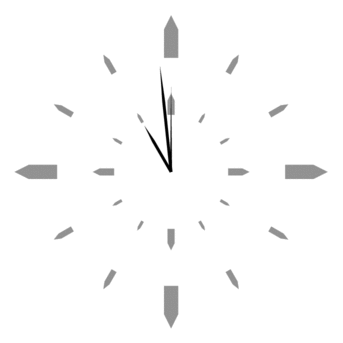Leaderboard
Popular Content
Showing content with the highest reputation on 04/17/2020 in all areas
-
Strange how i ask here and answer to myself . Well... "I like to talk with a smart person!" ©3 points
-
Ok, i think i got it to work (again, obviously it was easier then i thought). When the window initialized, we send expand message (as PIDL), and then we just send another message to select the item, and then once we have target item selected, we can set checked state for that item. #include <WindowsConstants.au3> #include <WinAPIDlg.au3> #include <GUITreeView.au3> Global $sChecked $sInitDir = @ProgramFilesDir $sRoot = _WinAPI_PathStripToRoot($sInitDir) $hBrowseProc = DllCallbackRegister('_BrowseProc', 'int', 'hwnd;uint;lparam;ptr') $pBrowseProc = DllCallbackGetPtr($hBrowseProc) $sChecked = $sInitDir & '|' & @UserProfileDir & '|' & @DesktopDir $pText = _WinAPI_CreateString($sInitDir) $sPath = _WinAPI_BrowseForFolderDlg($sRoot, 'Select a folder from the list below.', BitOR($BIF_RETURNONLYFSDIRS, $BIF_UAHINT, $BIF_BROWSEINCLUDEFILES, $BIF_VALIDATE, $BIF_NEWDIALOGSTYLE, $BIF_NONEWFOLDERBUTTON), $pBrowseProc, $pText) _WinAPI_FreeMemory($pText) If $sPath Then ConsoleWrite($sChecked & @CRLF) ;ConsoleWrite('--------------------------------------------------' & @CRLF) ;ConsoleWrite($sPath & @CRLF) EndIf DllCallbackFree($hBrowseProc) Func _BrowseProc($hWnd, $iMsg, $wParam, $lParam) Local $sPath, $aSplit, $pIDL Local Static $sPrev_Path, $hPrev_Item Local Static $hTV = ControlGetHandle($hWnd, '', 'SysTreeView321') Switch $iMsg Case $BFFM_INITIALIZED ;Set checkboxes _WinAPI_SetWindowLong($hTV, $GWL_STYLE, BitOR(_WinAPI_GetWindowLong($hTV, $GWL_STYLE), $TVS_CHECKBOXES)) ;Set title _WinAPI_SetWindowText($hWnd, 'MyTitle') ;Split the pre-checked list and set checkboxes by PIDL $aSplit = StringSplit($sChecked, '|') ;$sChecked = '' For $i = 1 To $aSplit[0] $pIDL = _WinAPI_ShellILCreateFromPath($aSplit[$i]) _SendMessage($hWnd, $BFFM_SETEXPANDED, 0, $pIDL) _SendMessage($hWnd, $BFFM_SETSELECTIONW, 0, $pIDL) _WinAPI_CoTaskMemFree($pIDL) _GUICtrlTreeView_SetChecked($hTV, _GUICtrlTreeView_GetSelection($hTV)) ;_GUICtrlTreeView_Expand($hTV, _GUICtrlTreeView_GetSelection($hTV), False) Next ;Set default selection _SendMessage($hWnd, $BFFM_SETSELECTIONW, 1, $lParam) Case $BFFM_SELCHANGED If $hPrev_Item Then _StringUpdate($sChecked, $sPrev_Path, _GUICtrlTreeView_GetChecked($hTV, $hPrev_Item)) EndIf $hPrev_Item = _GUICtrlTreeView_GetSelection($hTV) $sPath = _WinAPI_ShellGetPathFromIDList($wParam) If Not @error Then $sPrev_Path = $sPath EndIf EndSwitch Return 0 EndFunc Func _StringUpdate(ByRef $sString, $sValue, $bAdd, $bUnique = True, $sDelim = Default) If $sDelim == Default Then $sDelim = Opt('GUIDataSeparatorChar') EndIf If $bAdd Then If Not $bUnique Or ($bUnique And Not StringInStr($sDelim & $sString & $sDelim, $sDelim & $sValue & $sDelim, 2)) Then $sString &= ($sString ? $sDelim : '') & $sValue EndIf Return EndIf ;Remove If StringInStr($sDelim & $sString & $sDelim, $sDelim & $sValue & $sDelim, 2) Then Local $aString = StringSplit($sString, $sDelim) $sString = '' For $i = 1 To $aString[0] If $aString[$i] <> $sValue Then $sString &= ($sString ? $sDelim : '') & $aString[$i] EndIf Next EndIf EndFunc The "Magic" constant (BFFM_SETEXPANDED) i found here.2 points
-
Version v3.5
11,600 downloads
ImageSearch UDF v3.5 - AutoIt Wrapper for ImageSearchDLL Advanced image search library for AutoIt with cache system and SIMD optimization. Overview ImageSearchDLL UDF is a high-performance image search library for AutoIt that enables you to find images on screen or within other images. Built with C++14 and optimized with SIMD instructions (AVX512/AVX2/SSE2), it provides fast and accurate image matching capabilities. Features High Performance: SIMD optimization (AVX512/AVX2/SSE2) for fast searching Multi-Monitor Support: Full support for multi-monitor setups with negative coordinates DPI Awareness: Thread-local DPI awareness without affecting AutoIt GUI Cache System: Persistent cache for 30-50% speed boost on repeated searches Image Scaling: Search for images at different scales (0.1x to 5.0x) Screen Capture: Direct screen capture with DPI-aware coordinates Mouse Automation: Precise mouse movement and clicking with multi-monitor support Requirements AutoIt: Version 3.3.16.1 or higher Windows: XP SP3 to Windows 11 Architecture: x86 or x64 (automatic detection) DLL: ImageSearchDLL v3.5 (included) Installation Download the UDF package Place ImageSearchDLL_UDF.au3 in your script directory Ensure the appropriate DLL is in the same directory: ImageSearchDLL_x64.dll for 64-bit AutoIt ImageSearchDLL_x86.dll for 32-bit AutoIt Not required in embedded version! (But need to install Visual C++ Redistributable 2015-2022) Include the UDF in your script: #include "ImageSearchDLL_UDF.au3" Quick Start Basic Image Search #include "ImageSearchDLL_UDF.au3" ; Search for a button on screen Local $aResult = _ImageSearch("button.png") If $aResult[0] > 0 Then ConsoleWrite("Found at: " & $aResult[1][0] & ", " & $aResult[1][1] & @CRLF) MouseClick("left", $aResult[1][0], $aResult[1][1]) Else ConsoleWrite("Image not found" & @CRLF) EndIf Wait for Image and Click ; Wait up to 5 seconds for button to appear, then click it If _ImageSearch_WaitClick(5000, "button.png") Then MsgBox(0, "Success", "Button clicked!") Else MsgBox(0, "Failed", "Button not found within 5 seconds") EndIf Screen Capture ; Capture a region and save as PNG _ImageSearch_ScreenCapture_SaveImage(@ScriptDir & "\screenshot.png", 100, 100, 600, 400) ; Capture full screen _ImageSearch_ScreenCapture_SaveImage(@ScriptDir & "\fullscreen.png") API Reference Startup & Configuration _ImageSearch_Startup() Initializes the ImageSearch library by loading the appropriate DLL. Returns: Success: 1 (DLL loaded successfully) Failure: 0 and sets @error Remarks: Must be called before using any search functions Automatically called on script start DLL v3.5+ uses thread-local DPI awareness and won't affect AutoIt GUI _ImageSearch_Shutdown() Closes the DLL and cleans up resources. _ImageSearch_SetDllPath($sPath) Sets a custom DLL path (must be called before _ImageSearch_Startup). Parameters: $sPath - Full path to the DLL file Returns: Success: 1 Failure: 0 (file not found) Core Search Functions _ImageSearch($sImagePath [, $iLeft, $iTop, $iRight, $iBottom [, $iScreen [, $iTolerance [, $iResults [, $iCenterPOS [, $fMinScale [, $fMaxScale [, $fScaleStep [, $iReturnDebug [, $iUseCache]]]]]]]]) Searches for an image within a specified screen area. Parameters: $sImagePath - Image file path(s), multiple separated by "|" $iLeft, $iTop, $iRight, $iBottom - Search region (0 = entire screen) $iScreen - Monitor index (-1 = virtual screen, 0 = primary, 1+ = specific monitor) $iTolerance - Color tolerance 0-255 (default: 10) $iResults - Max results 1-1024 (default: 1) $iCenterPOS - Return center (1) or top-left (0) coordinates (default: 1) $fMinScale, $fMaxScale - Scale range 0.1-5.0 (default: 1.0) $fScaleStep - Scale step (default: 0.1) $iReturnDebug - Debug mode (default: 0) $iUseCache - Enable cache (default: 1) Returns: Success: Array of found positions [count][X, Y, Width, Height] Failure: Empty array with @error set Example: ; Search for multiple images with scaling Local $aResult = _ImageSearch("icon1.png|icon2.png", 0, 0, 800, 600, -1, 10, 5, 1, 0.8, 1.2, 0.1) If $aResult[0] > 0 Then For $i = 1 To $aResult[0] ConsoleWrite("Match " & $i & " at: " & $aResult[$i][0] & ", " & $aResult[$i][1] & @CRLF) Next EndIf _ImageSearch_InImage($sSourceImage, $sTargetImage [, $iTolerance [, $iResults [, $iCenterPOS [, $fMinScale [, $fMaxScale [, $fScaleStep [, $iReturnDebug [, $iUseCache]]]]]]]]) Searches for a target image within a source image (file-to-file search). Parameters: $sSourceImage - Path to source image file $sTargetImage - Path to target image file(s), multiple separated by "|" Other parameters same as _ImageSearch Returns: Same as _ImageSearch Remarks: Useful for pre-processing images or testing without screen capture Example: $aResult = _ImageSearch_InImage("screenshot.png", "button.png", 20) _ImageSearch_hBitmap($hBitmapSource, $hBitmapTarget [, $iTolerance [, $iLeft [, $iTop [, $iRight [, $iBottom [, $iResults [, $iCenterPOS [, $fMinScale [, $fMaxScale [, $fScaleStep [, $iReturnDebug [, $iUseCache]]]]]]]]]]]]) Searches for a target bitmap within a source bitmap (memory-to-memory search). Parameters: $hBitmapSource - Handle to source bitmap (HBITMAP) $hBitmapTarget - Handle to target bitmap (HBITMAP) Other parameters same as _ImageSearch Returns: Same as _ImageSearch Remarks: Fastest method for repeated searches (no disk I/O) Bitmaps must be created with GDI/GDI+ functions Screen Capture Functions _ImageSearch_CaptureScreen([$iLeft, $iTop, $iRight, $iBottom [, $iScreen]]) Capture screen region and return as HBITMAP handle. Parameters: $iLeft, $iTop, $iRight, $iBottom - Capture region (default: 0 = full screen) $iScreen - Monitor index (default: -1 = virtual screen) Returns: Success: HBITMAP handle (must DeleteObject when done) Failure: 0 and sets @error Example: $hBitmap = _ImageSearch_CaptureScreen(0, 0, 800, 600) ; ... use $hBitmap ... _WinAPI_DeleteObject($hBitmap) _ImageSearch_ScreenCapture_SaveImage($sImageFile [, $iLeft [, $iTop [, $iRight [, $iBottom [, $iScreen]]]]]) Captures a screen region and saves it directly to an image file in one call. Parameters: $sImageFile - Output file path (extension determines format: .bmp, .png, .jpg/.jpeg) $iLeft, $iTop, $iRight, $iBottom - Capture region (default: 0 = full screen) $iScreen - Monitor index (default: 0 = primary screen) Returns: Success: True (1) Failure: False (0) and sets @error Remarks: Automatically detects format from file extension ~2x faster than separate capture + save operations JPEG quality is fixed at 100% (highest quality) Uses DPI-aware capture (accurate on all DPI scales) Example: ; Capture full primary screen to PNG _ImageSearch_ScreenCapture_SaveImage(@ScriptDir & "\screenshot.png") ; Capture region on monitor 2 to JPEG _ImageSearch_ScreenCapture_SaveImage(@ScriptDir & "\region.jpg", 100, 100, 600, 400, 2) _ImageSearch_hBitmapLoad($sImageFile [, $iAlpha [, $iRed [, $iGreen [, $iBlue]]]]) Load image file and convert to HBITMAP handle. Parameters: $sImageFile - Path to image file $iAlpha, $iRed, $iGreen, $iBlue - Background color components 0-255 (default: 0 = transparent) Returns: Success: HBITMAP handle (must DeleteObject when done) Failure: 0 and sets @error Example: $hBitmap = _ImageSearch_hBitmapLoad("image.png", 255, 255, 255, 255) ; White background ; ... use $hBitmap ... _WinAPI_DeleteObject($hBitmap) Mouse Functions _ImageSearch_MouseMove($iX, $iY [, $iSpeed [, $iScreen]]) Moves mouse cursor to coordinates (supports negative coordinates on multi-monitor). Parameters: $iX, $iY - Target coordinates (-1 = keep current position) $iSpeed - Speed 0-100 (0=instant, default: 0) $iScreen - Monitor index (default: -1 = virtual screen) Returns: 1 on success, 0 on failure _ImageSearch_MouseClick([$sButton [, $iX [, $iY [, $iClicks [, $iSpeed [, $iScreen]]]]]]) Clicks mouse at coordinates (screen or current position). Parameters: $sButton - Button: "left", "right", "middle" (default: "left") $iX, $iY - Coordinates (-1 = current position) $iClicks - Number of clicks (default: 1) $iSpeed - Speed 0-100 (0=instant, default: 0) $iScreen - Monitor index (default: -1 = virtual screen) Returns: 1 on success, 0 on failure _ImageSearch_MouseClickWin($sTitle, $sText, $iX, $iY [, $sButton [, $iClicks [, $iSpeed]]]) Clicks mouse in a window. Parameters: $sTitle - Window title/class/handle $sText - Window text $iX, $iY - Relative coordinates in window $sButton - Button (default: "left") $iClicks - Number of clicks (default: 1) $iSpeed - Speed 0-100 (default: 0) Returns: 1 on success, 0 on failure Wait & Click Functions _ImageSearch_Wait($iTimeout, $sImagePath [, $iLeft [, $iTop [, $iRight [, $iBottom [, $iScreen [, $iTolerance [, $iResults [, $iCenterPOS [, $fMinScale [, $fMaxScale [, $fScaleStep [, $iReturnDebug [, $iUseCache [, $iMaxAttempts]]]]]]]]]]]]]) Waits for an image to appear on screen with timeout and optional max attempts limit. Parameters: $iTimeout - Timeout in milliseconds (0 = wait forever) $sImagePath - Image file path(s), multiple separated by "|" $iMaxAttempts - Max number of search attempts (0 = unlimited, default: 0) Other parameters same as _ImageSearch Returns: Success: 2D Array (same as _ImageSearch) Timeout: Empty array with [0][0] = 0 Example: ; Wait 5 seconds for button (unlimited attempts) $aResult = _ImageSearch_Wait(5000, "button.png") If $aResult[0] > 0 Then MouseClick("left", $aResult[1][0], $aResult[1][1]) Else MsgBox(0, "Timeout", "Button not found") EndIf _ImageSearch_WaitClick($iTimeout, $sImagePath [, $sButton [, $iClicks [, $iLeft [, $iTop [, $iRight [, $iBottom [, $iScreen [, $iTolerance [, $iResults [, $iCenterPOS [, $fMinScale [, $fMaxScale [, $fScaleStep [, $iReturnDebug [, $iUseCache]]]]]]]]]]]]]) Waits for an image and clicks it when found. Parameters: $iTimeout - Timeout in milliseconds (0 = wait forever) $sImagePath - Image file path(s) $sButton - Mouse button: "left", "right", "middle" (default: "left") $iClicks - Number of clicks (default: 1) Other parameters same as _ImageSearch Returns: Success: 1 (image found and clicked) Timeout: 0 (image not found) Monitor Functions _ImageSearch_Monitor_GetList() Gets a list of all connected display monitors and their properties. Returns: Success: The number of monitors found. @extended contains a detailed log. Failure: 0 and sets @error Remarks: Populates the global $g_aMonitorList Called automatically by _ImageSearch_Startup _ImageSearch_Monitor_ToVirtual($iMonitor, $iX, $iY) Converts local monitor coordinates to virtual screen coordinates. Parameters: $iMonitor - The 1-based index of the monitor $iX, $iY - Coordinates relative to the monitor's top-left corner Returns: Success: A 2-element array [$vX, $vY] containing virtual screen coordinates Failure: 0 and sets @error _ImageSearch_Monitor_FromVirtual($iMonitor, $iX, $iY) Converts virtual screen coordinates to local monitor coordinates. Parameters: $iMonitor - The 1-based index of the monitor $iX, $iY - Virtual screen coordinates Returns: Success: A 2-element array [$lX, $lY] containing local monitor coordinates Failure: 0 and sets @error _ImageSearch_Monitor_Current() Detects which monitor contains the current mouse cursor position. Returns: Success: Monitor index (1-based) where the cursor is located Failure: 0 and sets @error _ImageSearch_Monitor_GetAtPosition([$iX [, $iY]]) Returns detailed information string about the monitor at specified position. Parameters: $iX, $iY - Coordinates (default: -1 = use mouse cursor position) Returns: Success: String describing the monitor (e.g., "Monitor 2: 1920x1080 (Primary)") Failure: Error message string Window Coordinate Functions _ImageSearch_Window_ToScreen($hWnd, $iX, $iY [, $bClientArea]) Converts window-relative coordinates to screen (virtual desktop) coordinates. Parameters: $hWnd - Window handle or title $iX, $iY - Coordinates relative to window $bClientArea - True = relative to client area, False = relative to window (default: True) Returns: Success: A 2-element array [$screenX, $screenY] containing screen coordinates Failure: 0 and sets @error _ImageSearch_Window_FromScreen($hWnd, $iScreenX, $iScreenY [, $bClientArea]) Converts screen (virtual desktop) coordinates to window-relative coordinates. Parameters: $hWnd - Window handle or title $iScreenX, $iScreenY - Screen coordinates $bClientArea - True = relative to client area, False = relative to window (default: True) Returns: Success: A 2-element array [$winX, $winY] containing window-relative coordinates Failure: 0 and sets @error Cache & Info Functions _ImageSearch_WarmUpCache($sImagePaths [, $bEnableCache]) Pre-loads images into cache for faster subsequent searches. Parameters: $sImagePaths - Pipe-separated list of images to preload $bEnableCache - Enable persistent cache (default: True) Returns: Success: Number of images cached Failure: 0 Example: _ImageSearch_WarmUpCache("btn1.png|btn2.png|icon.png") _ImageSearch_ClearCache() Clears the internal bitmap and location cache. Remarks: Useful for freeing memory or forcing re-scan after image updates Clears both in-memory cache and persistent disk cache _ImageSearch_GetDllInfo([$bForceRefresh]) Gets comprehensive DLL information in INI format. Parameters: $bForceRefresh - Force refresh of cached info (default: True) Returns: Multi-line string in INI format with sections: [DLL] - DLL name, version, architecture, author [OS] - OS name, version, build, platform [CPU] - Threads, SSE2, AVX2, AVX512 support [SCREEN] - Virtual screen, scale, monitors with individual resolutions [CACHE] - Location cache, bitmap cache, pool size _ImageSearch_GetInfo() Gets formatted DLL and system information for display. Returns: Formatted string with DLL info, cache status, and screen information _ImageSearch_GetDllValue($sSection, $sKey) Quick accessor to read any value from cached DLL Info. Parameters: $sSection - Section name (DLL, OS, CPU, SCREEN, CACHE) $sKey - Key name Returns: Value string or "" if not found Example: $sVersion = _ImageSearch_GetDllValue("DLL", "Version") $sOSName = _ImageSearch_GetDllValue("OS", "Name") $iThreads = _ImageSearch_GetDllValue("CPU", "Threads") _ImageSearch_GetLastResult() Gets the raw DLL return string from the last search. Returns: Raw result string (e.g., "{2}[100|200|32|32,150|250|32|32]") Remarks: Useful for debugging or custom parsing _ImageSearch_GetScale([$iScreen]) Gets the DPI scale factor for a specific monitor as a decimal number. Parameters: $iScreen - Monitor index (0 = Primary, 1+ = specific monitor number) Returns: Scale factor as number (e.g., 1.0, 1.25, 1.5) or 0 if not found Example: $fScale = _ImageSearch_GetScale(0) ; Get primary monitor scale (e.g., 1.25) $fScale = _ImageSearch_GetScale(2) ; Get monitor 2 scale Examples Advanced Search with Multiple Images and Scaling #include "ImageSearchDLL_UDF.au3" ; Search for multiple UI elements with different scales Local $sImages = "button_ok.png|button_cancel.png|icon_settings.png" Local $aResult = _ImageSearch($sImages, 0, 0, 1920, 1080, -1, 15, 10, 1, 0.8, 1.3, 0.1, 0, 1) If $aResult[0] > 0 Then ConsoleWrite("Found " & $aResult[0] & " matches:" & @CRLF) For $i = 1 To $aResult[0] ConsoleWrite(" Match " & $i & ": X=" & $aResult[$i][0] & ", Y=" & $aResult[$i][1] & ", W=" & $aResult[$i][2] & ", H=" & $aResult[$i][3] & @CRLF) Next Else ConsoleWrite("No matches found" & @CRLF) EndIf Multi-Monitor Screen Capture #include "ImageSearchDLL_UDF.au3" ; Get monitor information _ImageSearch_Monitor_GetList() ConsoleWrite("Detected " & $g_aMonitorList[0][0] & " monitors" & @CRLF) ; Capture each monitor separately For $i = 1 To $g_aMonitorList[0][0] Local $sFile = @ScriptDir & "\monitor_" & $i & ".png" _ImageSearch_ScreenCapture_SaveImage($sFile, 0, 0, 0, 0, $i) ConsoleWrite("Captured monitor " & $i & " to: " & $sFile & @CRLF) Next ; Capture entire virtual desktop _ImageSearch_ScreenCapture_SaveImage(@ScriptDir & "\virtual_desktop.png", 0, 0, 0, 0, -1) Automated UI Testing #include "ImageSearchDLL_UDF.au3" ; Pre-load images for better performance _ImageSearch_WarmUpCache("login_button.png|username_field.png|password_field.png") ; Wait for login screen and interact If _ImageSearch_WaitClick(10000, "login_button.png") Then ConsoleWrite("Login button clicked" & @CRLF) ; Find username field and click Local $aUsername = _ImageSearch_Wait(5000, "username_field.png") If $aUsername[0] > 0 Then MouseClick("left", $aUsername[1][0], $aUsername[1][1]) Send("myusername") ; Find password field and click Local $aPassword = _ImageSearch_Wait(5000, "password_field.png") If $aPassword[0] > 0 Then MouseClick("left", $aPassword[1][0], $aPassword[1][1]) Send("mypassword") Send("{ENTER}") EndIf EndIf Else MsgBox(0, "Error", "Login screen not found within 10 seconds") EndIf Error Codes Code Constant Description -1 $IMGSE_INVALID_PATH Invalid file path -2 $IMGSE_FAILED_TO_LOAD_IMAGE Failed to load image -3 $IMGSE_FAILED_TO_GET_SCREEN_DC Failed to get screen device context -4 $IMGSE_INVALID_SEARCH_REGION Invalid search region -5 $IMGSE_INVALID_PARAMETERS Invalid parameters -6 $IMGSE_INVALID_SOURCE_BITMAP Invalid source bitmap -7 $IMGSE_INVALID_TARGET_BITMAP Invalid target bitmap -9 $IMGSE_RESULT_TOO_LARGE Result too large -10 $IMGSE_INVALID_MONITOR Invalid monitor Performance Tips Use Cache: Enable cache for repeated searches to get 30-50% speed boost Pre-load Images: Use _ImageSearch_WarmUpCache() during initialization Limit Search Area: Specify search regions instead of full screen when possible Optimize Tolerance: Use appropriate tolerance values (5-15 for most cases) Use Appropriate Scale Range: Limit scale range to what you actually need Monitor Selection: Use specific monitor index for faster searches on multi-monitor setups Image Format: BMP files load faster than PNG/JPG but are larger Memory Management: Always call _WinAPI_DeleteObject() for HBITMAP handles Changelog Version 3.5 Added thread-local DPI awareness (no GUI resize issues) Enhanced multi-monitor support with individual monitor scales Improved cache system with persistent disk cache Added _ImageSearch_ScreenCapture_SaveImage() for direct file saving Performance optimizations with SIMD instructions Better error handling and debugging information License This project is licensed under the MIT License - see the LICENSE file for details. Author Dao Van Trong - TRONG.PRO Thank you for using ImageSearch UDF! 🚀 ☕ Support My Work Enjoy my work? Buy me a 🍻 or tip via ❤️ PayPal Happy Automating! 🚀 ___________________________1 point -
I needed a function to automate programs at work that can't be fully automated via Autoits built in functions. For example a virtual machine running on your physical machine, meaning you would need to run an extra script within the virtual machine (if it is even running Windows) in order to automate everything. I came across OpenCV which allows matching/finding a picture in another picture. This would also allow searching for a button/text on the screen in order to press the exact position. Fortunately @mylise already translated all the required OpenCV functions to Autoit, I just had to remove all unnecessary functions to make the script as small as possible. The problem: Using this method, you will never be able to fully automate everything dynamically, as it will only work on the machine with same resolution/dpi settings, same theme etc.. This is only a last resort for programs that can't be automated using the built in Autoit functions. Features: Find a given picture on the entire screen (all monitors) or a certain area on the screen and execute mouse clicks on this position. Adjust the threshold so that the picture doesn't have to match 100%. Debugging options like logging and marking the screen where the picture was found etc. Includes a Snapshot-Tool that creates snapshots of a certain area(buttons, text etc.) on the screen and generates the code that is required for the matching. It can also be used to get the coordinates to a marked area on the screen in order to check only on a certain area for the match picture. Example: Note: The example will probably not work on your computer, depending on the display resolution and dpi settings, as the picture has to match the exact same size on the screen. Please use the included Snapshot-Tool to generate new match pictures and code very easily. #AutoIt3Wrapper_UseX64=n ; In order for the x86 DLLs to work #include "OpenCV-Match_UDF.au3" _OpenCV_Startup();loads opencv DLLs _OpenCV_EnableLogging(True,True,True) ;Logs matches, errors in a log file and autoit console output. ;Please note that these examples might not work as the match pictures have to be found with the exact same size on your screen. ;Example 1 ShellExecute("http://www.tv.com/");Open Website tv.com $Match1 = _MatchPicture(@ScriptDir&"\Match\1.png", 0.70,False,10,500);Try to find the match picture on the screen. Number of tries: 10, Sleep between each try: 500ms. If Not @error Then _MarkMatch($Match1) ;Debugging: Draws a rect on the screen/coordinates of the match to show the user where the match was found Sleep(100) _ClickMouse($Match1, "left",1) ;Calculates the center of the match and clicks the left mouse once on click position EndIf Sleep(1000) ;Example 2, matching on a specific area of the screen ShellExecute("notepad.exe");open nodepad WinWait("[CLASS:Notepad]","",5) WinMove("[CLASS:Notepad]","",0,0,500,500) Local $sCoords[4] = [0, 0, 500,500] $Match2 = _MatchPicture(@ScriptDir&"\Match\2.png", 0.80,$sCoords,3,500) If Not @error Then _MarkMatch($Match2) Sleep(100) _ClickMouse($Match2, "left", 1) EndIf _OpenCV_Shutdown();Closes DLLs So basically, all you need to do is provide a path to the match picture and the function will return you the coordinates (x1,y1,x2,y2) of where the picture has been found on the screen. With these, you can either calculate an exact position for the mouse click or use the "_ClickMouse" function which will execute a mouse click on the center of the coordinates where the picture was found. Credits: @mylise for the OpenCV UDF Download: Includes the required .DLL files of OpenCV. You can also manually download them on the website of OpenCV (Version 3.x doesn't include these anymore, you need to download 2.x). OpenCV_Match.zip1 point
-
WinHttp.au3: #include-once Global Const $HTTP_STATUS_OK = 200 Func HttpPost($sURL, $sData = "") Local $oHTTP = ObjCreate("WinHttp.WinHttpRequest.5.1") $oHTTP.Open("POST", $sURL, False) If (@error) Then Return SetError(1, 0, 0) $oHTTP.SetRequestHeader("Content-Type", "application/x-www-form-urlencoded") $oHTTP.Send($sData) If (@error) Then Return SetError(2, 0, 0) If ($oHTTP.Status <> $HTTP_STATUS_OK) Then Return SetError(3, 0, 0) Return SetError(0, 0, $oHTTP.ResponseText) EndFunc Func HttpGet($sURL, $sData = "") Local $oHTTP = ObjCreate("WinHttp.WinHttpRequest.5.1") $oHTTP.Open("GET", $sURL & "?" & $sData, False) If (@error) Then Return SetError(1, 0, 0) $oHTTP.Send() If (@error) Then Return SetError(2, 0, 0) If ($oHTTP.Status <> $HTTP_STATUS_OK) Then Return SetError(3, 0, 0) Return SetError(0, 0, $oHTTP.ResponseText) EndFunc Example 1: #include "WinHttp.au3" Global $MD5 = HttpPost("http://www.afk-manager.ir/test/post.php", "password=WeWantThisAsMd5") MsgBox(64, "MD5", $MD5) Example 2: #include "WinHttp.au3" Global $sGet = HttpGet("http://www.google.com/") FileWrite("Google.txt", $sGet) Speed compare: [WinHttp.WinHttpRequest.5.1 GET] 1 = 422.961162765649 2 = 455.738280639636 3 = 441.821516504421 4 = 390.538648365335 Total = 1711.059608275041 Average = 427.7649020687603 [WinHttp.WinHttpRequest.5.1 POST] 1 = 826.436200956633 2 = 872.366642546045 3 = 871.266802895081 4 = 875.792832686324 Total = 3445.862479084083 Average = 861.4656197710208 [HTTP UDF GET] 1 = 984.282912132673 2 = 813.896511915435 3 = 781.158836566862 4 = 791.901235916364 Total = 3371.239496531334 Average = 842.8098741328335 [HTTP UDF POST] 1 = 788.734835486743 2 = 975.688234142967 3 = 785.810779035388 4 = 847.537193542955 Total = 3397.771042208053 Average = 849.4427605520133 [InetRead GET] 1 = 672.120733570292 2 = 595.221462195098 3 = 561.122261209642 4 = 738.180516302658 Total = 2566.64497327769 Average = 641.6612433194225 Tests result: Server 2003 32bit OK Server 2003 64bit Not Tested Server 2008 32bit Not Tested Server 2008 64bit OK XP 32bit OK XP 64bit Not Tested Vista 32bit Not Tested Vista 64bit Not Tested 7 32bit OK 7 64bit OK 8 32bit OK 8 64bit OK Are you interested? Check this out: http://msdn.microsoft.com/en-us/library/windows/desktop/aa384106(v=vs.85).aspx1 point
-
Found the solution (described here: stackoverflow) I need to add the following step to ptrex old topic: $oRDP.AdvancedSettings8.EnableCredSspSupport = true Script example: #include <GUIConstantsEx.au3> #include <WinAPI.au3> #include <WindowsConstants.au3> $host = "IP Address" ;<<<<<<< enter here the host name or ip address ;Remote Desktop ActiveX Control Interfaces -> http://msdn.microsoft.com/en-us/library/aa383022(v=VS.85).aspx $hGUI = GUICreate("RDP Embedded Sessions", 952, 675, -1, -1, $WS_OVERLAPPEDWINDOW + $WS_CLIPSIBLINGS + $WS_CLIPCHILDREN) $oRDP = ObjCreate("MsTscAx.MsTscAx") ;http://msdn.microsoft.com/en-us/library/aa381344(v=VS.85).aspx $oRDP_Ctrl = GUICtrlCreateObj($oRDP, 64, 44, 800, 600) GUICtrlSetResizing(-1, $GUI_DOCKALL) GUICtrlSetStyle($oRDP_Ctrl , $WS_VISIBLE) $oRDP.DesktopWidth = 1366 $oRDP.DesktopHeight = 768 $oRDP.Fullscreen = 768 $oRDP.ColorDepth = 32 $oRDP.AdvancedSettings2.RedirectDrives = True ; Sollen die Laufwerke mitgenommen werden $oRDP.AdvancedSettings2.RedirectPrinters = False ; Sollen die Drucker mitgenommen werden $oRDP.AdvancedSettings2.RedirectPorts = False ; Ports wie LPT1 etc $oRDP.AdvancedSettings2.RedirectSmartCards = False ; SmartCards für Authentifizierung $oRDP.AdvancedSettings2.EnableAutoReconnect = False $oRDP.AdvancedSettings2.allowBackgroundInput = False $oRDP.AdvancedSettings2.ConnectionBarShowRestoreButton = False $oRDP.AdvancedSettings3.SmartSizing = True $oRDP.AdvancedSettings5.AudioRedirectionMode = 0 $oRDP.AdvancedSettings2.ClearTextPassword = "Password" ; <<<<<<< enter here the user password $oRDP.AdvancedSettings8.EnableCredSspSupport = true $oRDP.Server = $host $oRDP.UserName = "Username" ;<<<<<<< enter here the user name $oRDP.Domain = "domain" ;<<<<<<< enter here the domain name $oRDP.ConnectingText = "Connecting to " & $host $oRDP.DisconnectedText = "Disconnected from " & $host $oRDP.StartConnected = True $oRDP.Connect() GUISetState(@SW_SHOW, $hGUI) ;~ ConsoleWrite($oRDP.GetErrorDescription() & @CRLF) While 1 $nMsg = GUIGetMsg() Switch $nMsg Case $GUI_EVENT_CLOSE $oRDP.Disconnect() Exit EndSwitch WEnd Hope this post is useful to someone else. regards Peppe1 point
-
This is the site I use for RegEx stuff: http://regexlib.com/Default.aspx1 point
-
Maybe this ? #Include <Array.au3> $txt = StringReplace(FileRead("numbers.txt"), @crlf, ", ") $res = StringRegExp($txt, '([^"]+)" = "((?:Mobile|Home)[^"]+)', 3) Local $n = UBound($res), $k = 2, $res2D[Ceiling($n/$k)][$k] For $i = 0 To $n - 1 $res2D[Int($i / $k)][Mod($i, $k)] = $res[$i] Next _ArrayDisplay($res2D) Edit The trick is to use [^"] which means "any non-quote character" Mobile|Home is mentioned explicitely to avoid capture of "test" = "test" or so1 point
-

IE Click on text (ajax) (solved)
Zmylna reacted to FrancescoDiMuro for a topic
@Zmylna Use the .Title property for the $n object1 point -

Use C/C++ DLL in VBA
FrancescoDiMuro reacted to Danyfirex for a topic
Hello. Maybe this , this , this and this can help you. Saludos1 point -

Auto Laptop Recharge/Discharge
FrancescoDiMuro reacted to Earthshine for a topic
Yeah. Quit being lazy and write that UDF If it’s so important to you do it yourself instead of insulting other people. Plus what you’re asking for is impossible. It has to be built into the OS and have programmable hardware support.1 point -
Hi Folks, I'm a great fan of AutoIT. While trying to automate data entry into a java applet based ERP, I found that checking for entry error or success is quite a pain using pixelsearch. Instead, check for a data entry "success" or "failed" image is far simpler. This a feature found in AHK, I've cut out the necessary code and compiled it into a DLL, and written a au3 library around it. I've tested it in various XP and W2k3 machines, and it seems to work fine. It's a quick and dirty hack I did to get a job done, so your mileage may vary ImageSearch.zip (84K) Number of downloads:1 point
-
Set display font of RichEdit control
argumentum reacted to benners for a topic
Then just don't set any text when the RichEdit is initially created #include <GUIConstantsEx.au3> #include <GuiRichEdit.au3> #include <WindowsConstants.au3> Example() Func Example() Local $hGui = GUICreate("Example (" & StringTrimRight(@ScriptName, StringLen(".exe")) & ")", 320, 350, -1, -1) Local $hRichEdit = _GUICtrlRichEdit_Create($hGui, "", 10, 10, 300, 220, _ BitOR($ES_MULTILINE, $WS_VSCROLL, $ES_AUTOVSCROLL)) _GUICtrlRichEdit_SetSel($hRichEdit, 0, -1) ; select all _GUICtrlRichEdit_ChangeFontSize($hRichEdit, 4) ; change point size _GUICtrlRichEdit_Deselect($hRichEdit) ; deselect all Local $idBtnDoIt = GUICtrlCreateButton("Do it", 270, 310, 40, 30) Local $iMsg GUISetState(@SW_SHOW) While True $iMsg = GUIGetMsg() Select Case $iMsg = $GUI_EVENT_CLOSE _GUICtrlRichEdit_Destroy($hRichEdit) ; needed unless script crashes ; GUIDelete() ; is OK too Exit Case $iMsg = $idBtnDoIt _GUICtrlRichEdit_AppendText($hRichEdit, @CRLF & "This is appended text.") EndSelect WEnd EndFunc ;==>Example1 point -

Set display font of RichEdit control
argumentum reacted to InunoTaishou for a topic
_GUICtrlRichEdit_SetFont does exactly that #include <GUIConstantsEx.au3> #include <GuiRichEdit.au3> #include <WindowsConstants.au3> Example() Func Example() Local $hGui = GUICreate("Example (" & StringTrimRight(@ScriptName, StringLen(".exe")) & ")", 320, 350, -1, -1) Local $hRichEdit = _GUICtrlRichEdit_Create($hGui, "This is a test.", 10, 10, 300, 220, _ BitOR($ES_MULTILINE, $WS_VSCROLL, $ES_AUTOVSCROLL)) Local $iFontSize = 12 Local $lblSize = GUICtrlCreateLabel("Current Size: " & $iFontSize, 10, 270, 150, 20) Local $btnIncrease = GUICtrlCreateButton("Increase", 10, 240, 100, 20) Local $btnDecrease = GUICtrlCreateButton("Decrease", 210, 240, 100, 20) ; Change it as soon as it's made ; RichEdit controls start out with MS Sans Serif size 8.5 by default ; You need to select the whole control and then set the font ChangeFontSize($hRichEdit, $iFontSize) GUISetState(@SW_SHOW) While (True) Switch (GUIGetMsg()) Case $GUI_EVENT_CLOSE _GUICtrlRichEdit_Destroy($hRichEdit) ; needed unless script crashes ; GUIDelete() ; is OK too Exit Case $btnIncrease $iFontSize += 1 ChangeFontSize($hRichEdit, $iFontSize) GUICtrlSetData($lblSize, "Current Size: " & $iFontSize) Case $btnDecrease If ($iFontSize - 1 > 0) Then $iFontSize -= 1 ChangeFontSize($hRichEdit, $iFontSize) GUICtrlSetData($lblSize, "Current Size: " & $iFontSize) EndIf EndSwitch WEnd EndFunc ;==>Example Func ChangeFontSize($hRichEdit, $iSize) _GUICtrlRichEdit_SetSel($hRichEdit, 0, -1, True) ; select all _GUICtrlRichEdit_SetFont($hRichEdit, $iSize) _GUICtrlRichEdit_Deselect($hRichEdit) ; deselect all EndFunc ;==>ChangeFontSize By default a richedit control starts out with 8.5 as the size, using font MS Sans Serif (Something like that). Even if you use _SetFont right after making it, that very first 0 position of the text data is going to have the 8.5 MS Sans Serif font. So you need to select all of the text (even if there is none) and then use _SetFont. Afterwards, deselect it1 point -
kamuline, This works for me: #include <GUIConstantsEx.au3> #include "GUIListViewEx.au3" $gui = GUICreate("Order", 210, 300) $List = GUICtrlCreateListView("", 1, 1, 204, 300) ; Always best to set the extended ListView styles like this ; And yo uneed the FULLROWSELECT extended style for the UDF to work _GUICtrlListView_SetExtendedListViewStyle($List, BitOR($LVS_EX_FULLROWSELECT, $LVS_EX_GRIDLINES, $LVS_EX_CHECKBOXES)) GUISetState() _Fill() While 1 Switch GUIGetMsg() Case $GUI_EVENT_CLOSE Exit EndSwitch _GUIListViewEx_EventMonitor() ; This lets the UDF do its magic WEnd Func _Fill() Local $Materials[5] = ["mat 1", "mat 2", "mat 3", "mat 4", "mat 5"] _GUICtrlListView_AddColumn($List, "Materials", 100) _GUICtrlListView_AddColumn($List, "Quantity", 100) ; initialise the ListView $iList_Index = _GUIListViewEx_Init($List, "") ; Set column 1 to be an edit with an updown from 0 to 3 _GUIListViewEx_SetEditStatus($iList_Index, 1, 1, 1, "0|3|1") ; Insert the data - tellign the UDF that the array elementas are separate rows _GUIListViewEx_Insert($Materials, True) ; Register the NOTIFY messages - no need for the others _GUIListViewEx_MsgRegister(True, False, False, False) EndFunc ;==>_Fill Please ask if you have any questions. M231 point
-
kamuline, if you are referring to the UDF, then I freely admit that it is a complex beast. But if you tell me what parts of your ListView need to be editable I will be happy to help you get it working as you require. M231 point
-
kamuline, My GUIListViewEx UDF (look in my sig for the link) allows you to have editable items within a ListView - you might want to take alook. M231 point
-
maybe like this: _IEImgClick($oIE, 'images/calculate.gif')1 point
-
I've been attempting to login to Instagram via the _WinHTTP functions all day with no succes. The response only loads the default login page, with no invalid/successful login notification. Here's my code. #include <WinHttp.au3> Global $host = 'instagram.com' $hOpen = _WinHttpOpen() $hConnect = _WinHttpConnect($hOpen, $host) $hLoginResult = _WinHttpSimpleFormFill($hConnect, "/accounts/login/", _ "login-form", _ "name:username", "theusername", _ "name:password", "thepassword") ConsoleWrite($hLoginResult & @CRLF) _WinHttpCloseHandle($hConnect) _WinHttpCloseHandle($hOpen) Any help would be appreciated, thanks.1 point







